Natural Building Techniques
Casa de Tierra preserves traditional design concerns of aesthetic, utility, durability and comfort, while employing a wide range of materials and methodologies that emphasize sustainability.
We maintain a special focus on bamboo and earth, as they are readily available and rapidly renewable elements.
Bamboo's strength, durability and flexibility make it an ideal structural material. Bamboo “has greater tensile strength (or resistance to being pulled apart) than steel, and it withstands compression better than concrete. Both qualities are essential to keeping the plant,” which grows to nearly 30 meters and is about as wide in diameter at the base as the very top, “from falling over. It needs the compression strength to hold up its own weight and tensile strength to bend in the wind without breaking.1
Bamboo is most often used as an alternative to timber, though, with its underground rhizome root system that continually regenerates when the stalks are cut, it is technically a type of quick-growing grass.
This rapid renewal, along with its ability to produce 35 % more oxygen from carbon dioxide than trees; sequester up to 70% more carbon per year than a hardwood forest; grow in degraded soils with no added fertilizers, pesticides, or irrigation; and, effectively bind soil to prevent erosion, secures its place among sustainable materials.
Earth is the most abundant material on the planet, and it is the most fundamental element in our natural building techniques in Nicaragua. In our effort to utilize resource-efficient building components, we learned that "processing soil for buildings requires only about 1% of energy needed to manufacture and process the same volume of cement concrete." 2
Building with earth is a common and prevalent practice, and "around 30% to 50% of the world's population (approximately 3 billion people) lives or works in earthen buildings." 3
There are numerous benefits to living in an earthen home: it is non-toxic, inherently fireproof, termite-resistant, sturdy, and durable. Earth maintains a high thermal mass, increasing the overall efficiency of a building by maintaining coolness in warm habitats and warmth in cold conditions; it subdues sound to create a quiet environment; and, it allows a building to breathe, thereby avoiding moisture issues.
In our approach to natural building in Nicaragua, we utilize the following techniques:
Adobe Blocks

Adobe blocks are one of the oldest building materials, dating back to 8000 B.C. and accounting for some of the earliest existing buildings in the world. This far and wide use can be attributed to simplicity of design, economy in creation, ease in acquiring elements, and durability.
Adobe is a natural building material made from sand, clay, and organic, fibrous materials, such as straw and manure. The composite mix is laid into brick-shaped frameworks to mold the adobe into shape The frames are then removed and the block is left to dry. In building a wall, adobe bricks are laid in courses, and a moist sand and clay mix is used as mortar.
Bamboo

Bamboo is adaptable, rapid growing woody grass that thrives in a wide range of climates (there are many species of Bamboo in Nicaragua), thereby securing its place among sustainable materials. Bamboo is well suited for a multitude of building products: its strength and flexibility makes Bamboo an ideal structural material, and its beauty appeals to aesthetic design. The benefits of Bamboo building have been known for centuries, and its value continues to increase. Bamboo's versatility permits us to incorporate it into our building methods in a variety of ways.
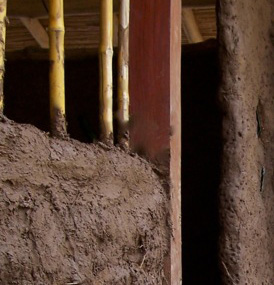
Chorizo
The chorizo wall system involves erecting bamboo poles that are equidistant from each other, and then weaving long, cylindrical, or chorizo, shaped mixes of sand, straw and clay between the pillars to create naturally undulating walls.
Cob
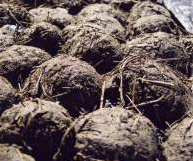
This ancient building material consists of clay, sand and straw. Cob is a close cousin to adobe, but unlike adobe, which is formed in frames, the elements are blended together and then molded by hand to shape walls, benches, nooks, shelves, and sculptural forms.
Compressed Earth Blocks
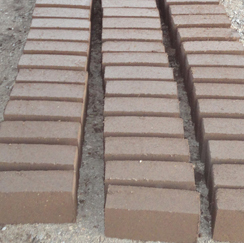
Compressed earth blocks are formed by combining clay and aggregate in a levered press that compacts the materials and produces a sturdy building block. These blocks can be stacked on the wall in various brick-laid patterns, and mortared together with a thinner version of the block's mix. This system creates strong, uniform, conventional-looking walls.
Earthbag
The earthbag technique, also known as superadobe or flexible-form rammed earth, is both old and new. It embraces the ancient approaches of adobe and rammed earth, and harnesses the design purpose behind sandbags, which have traditionally been used by the military for creating powerful, protective barriers, and whose attributes led to a resurgence of interest in bags as building blocks in home construction.
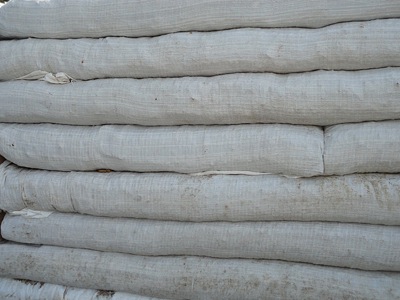
Modern day earthbag building typically utilizes bags constructed of polypropylene, a benign plastic, that "pound for pound…is stronger than steel, and when woven into a fabric it creates a lightweight, durable material." 4 Polypropylene bags are "low cost, flexible and high strength, available in a wide range of sizes and strengths, tear and wear resistant, 100% recyclable, resistant to alkali and acid, corrosion resistant, resistant to fungal growth, virtually unaffected by water and atmospheric moisture, and don't absorb water." 5
These polypropylene bags act as forms, and are filled with moistened earth that is of mineral composition and not subject to decomposing, and that which is often excavated during site preparation, thereby lowering the embodied energy associated with the manufacturing and transportation of building materials. The bags are laid, tamped into place, and as the earth dries in its bagged forms, these building blocks become strong and solid. In fact, testing shows that "earth-filled bags are almost 10 times stronger for supporting weight than wood stud walls." 6
Earthen Floors
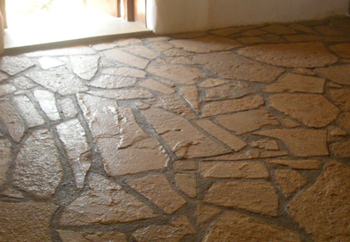
An earthen floor can be created utilizing sand, clay, gravel and stone to produce a protected surface that may be swept, mopped and cleaned. Natural floors are a healthy, high-thermal mass, economical, and environmental alternative to conventional flooring methods.
Hybrid Building
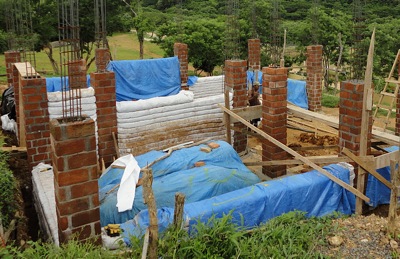
Casa de Tierra integrates environmentally conscious techniques with mainstream modes of construction in the form of hybrid buildings. We utilize contemporary practices, such as reinforced concrete columns, alongside our more sustainable approaches to create ecologically-friendly spaces.
Lath and Plaster
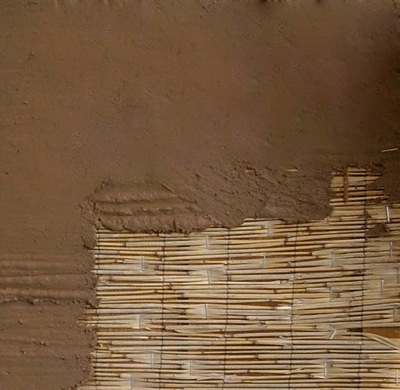
This method entails nailing narrow strips of wood, or lath, horizontally across a section of wall, and then applying a coat of plaster over it to create smooth, interior walls. In our application, bamboo slats can be used as the lath, and earthen mixes as the plaster.
Plasters & Paints
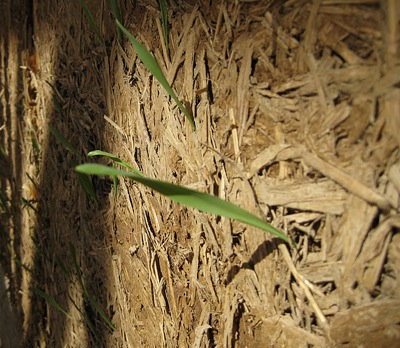
Our natural plasters and paints provide a beautiful, durable and protective finish, that is non-toxic and highly effective at controlling humidity.
Plaster options include earthen, gypsum, lime or, for specific applications, cement and lime renders. Our handcrafted paints and finishing selections are comprised of milk-based binders, flour paste, pigments, water glass, limewash, or linseed oil.
Wattle and Daub
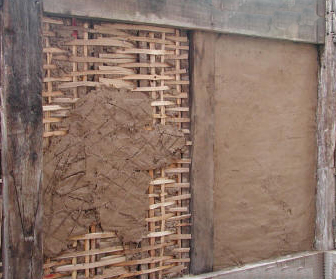
This wall building technique has proven its merit over the last 6,000 years, and many historic sites still display the original application. The wall is created by horizontally weaving wooden strips, or wattle, in between vertical stakes. Once a lattice is created, it is then coated, or daubed, with a natural plaster.
1 Newsweek.com, www.newsweek.com/stronger-steel-85533
2 EarthCo Megablock, www.earthcomegablock.com
3 World Housing Encyclopedia, www.world-housing.net
4, 5 NYP Corporation, www.nyp-corp.com
6 Bryce Daigle "Earthbag Housing: Structural Behavior and Applicability in Developing Countries."

